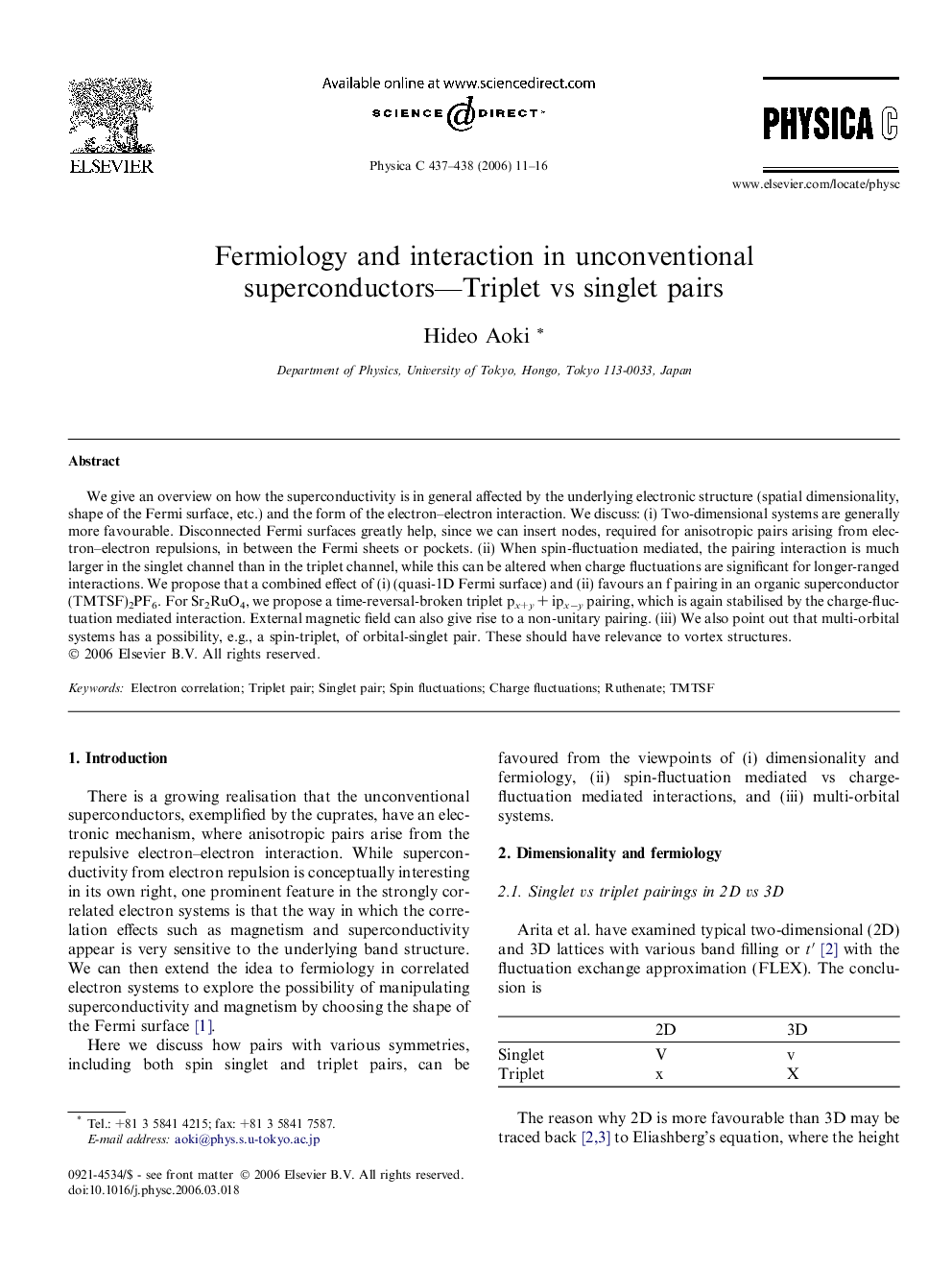| Article ID | Journal | Published Year | Pages | File Type |
|---|---|---|---|---|
| 1820914 | Physica C: Superconductivity and its Applications | 2006 | 6 Pages |
We give an overview on how the superconductivity is in general affected by the underlying electronic structure (spatial dimensionality, shape of the Fermi surface, etc.) and the form of the electron–electron interaction. We discuss: (i) Two-dimensional systems are generally more favourable. Disconnected Fermi surfaces greatly help, since we can insert nodes, required for anisotropic pairs arising from electron–electron repulsions, in between the Fermi sheets or pockets. (ii) When spin-fluctuation mediated, the pairing interaction is much larger in the singlet channel than in the triplet channel, while this can be altered when charge fluctuations are significant for longer-ranged interactions. We propose that a combined effect of (i) (quasi-1D Fermi surface) and (ii) favours an f pairing in an organic superconductor (TMTSF)2PF6. For Sr2RuO4, we propose a time-reversal-broken triplet px+y + ipx−y pairing, which is again stabilised by the charge-fluctuation mediated interaction. External magnetic field can also give rise to a non-unitary pairing. (iii) We also point out that multi-orbital systems has a possibility, e.g., a spin-triplet, of orbital-singlet pair. These should have relevance to vortex structures.
